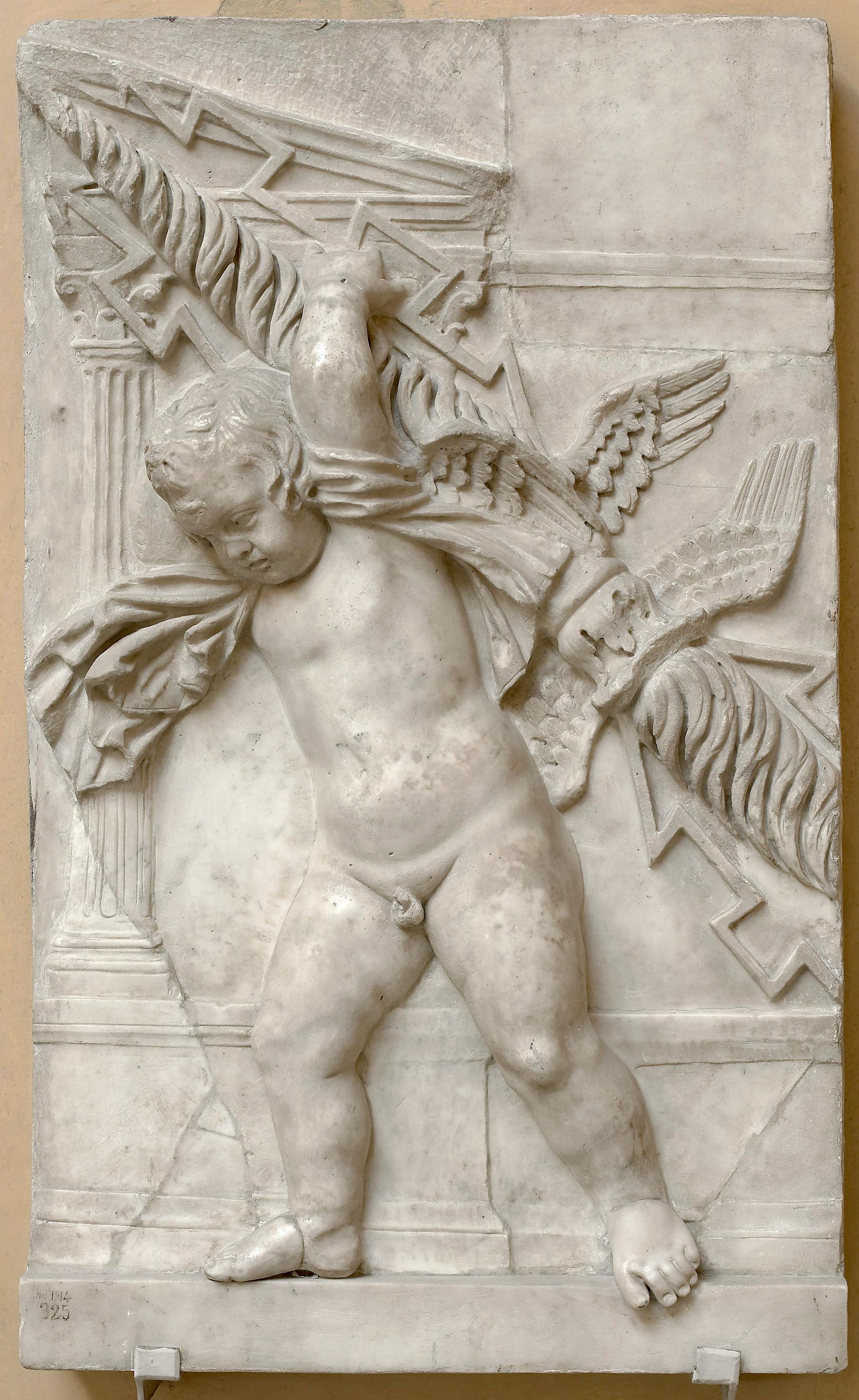Putto with Lightning Bolt
Roman Art
This magnificent marble relief was originally longer and more complex. It showed a series of hard-working putti (personifications of the god, Love, in the form of small winged children) with the attributes of the twelve most important Olympic divinities. The surviving putto is holding Zeus’ Lightning Bolt and we can imagine other putti carrying Demeter’s Torch or Neptune’s Trident on their shoulders. The attributes supported by the putti were destined to empty seats, which is why the marble was known as the “throne relief”. The work probably came from the Greek workshops in the mid of the first century A.D. to decorate a podium for statues of Emperor Claudius (41-54 A.D.) and his family. The piece has been well known since the 15th century and, due to its quality, was attributed to two of the most famous sculptors from classic antiquity: Praxiteles and Polycletus. This relief is so precious because it provides information about the techniques of classic statuary. Ancient sources also state that the wings of sculptures depicting personifications of Eros were usually covered with gold leaf. This was a frequent practice and the figures were known as chrysopteros, which means “with golden wings”. Scientific research has revealed traces of old gilding, found in the folds of the plumage on the putto’s wings, as mentioned in ancient literature. Nothing remains of the original colour, aside from minuscule fragments that cannot be seen by the naked eye. We can therefore only imaging the original, sumptuous gilded finish. The other putti almost certainly had gold wings and the features of the divinities were also most certainly coloured in the same way. Any spectator faced with the Emperor’s podium would have been able to enjoy a work of art of notable elegance and refinement.
3D Model realized in collaboration with Indiana University.
Visit http://www.digitalsculpture.org/florence/
F. Paolucci, Marmi dorati. Esempi di rivestimento a foglia d’oro su alcuni marmi antichi della Galleria degli Uffizi, in I. Baldini, A.L. Morelli (a cura di), Oro sacro. Aspetti religiosi e economici da Atene a Bisanzio, Bologna 2014, pp. 53-71, in part. pp. 66-69
